For a gamer, having a competition pc is essential! To be able to run the most demanding games, building your own PC from A to Z with the best components is essential but we do it above all out of passion!
If this is the first time you are assembling your pc, start by choosing your motherboard. To fully understand it and allow you to make your choice, discover our complete guide!
What is a Motherboard?
The motherboard is the main part of a computer. She is considered to be the mother of all the system that makes it up! It is therefore a vital element for the proper functioning of a PC. It mainly acts as a base that connects all the important elements of the computer. It, therefore, ensures, in a way, the interconnection of the elements of the PC.
It incorporates lines called traces. It is a narrow liner, made of copper and aluminum foil. These are the lines that provide the circuit and the link between the various components that are supported by the Rtx 3080 motherboard.
These lines, therefore, connect elements such as the processor, connectors, memory, and others to the motherboard and to the computer. Besides these lines, the best motherboards also have connectors for connection with other bodies of the computer. In all, this is what can be found on a motherboard besides the lines.
First of all, there is support for the processor. Then, it has connectors (2 to 6) for the link with the RAM. The card also has a chipset for managing data transfers. To this is added a clock for managing the speed of execution of tasks, a CMOS which is a reserve and emergency memory, a battery, a BIOS (a program for managing the processor-peripheral interface) and expansion slots.
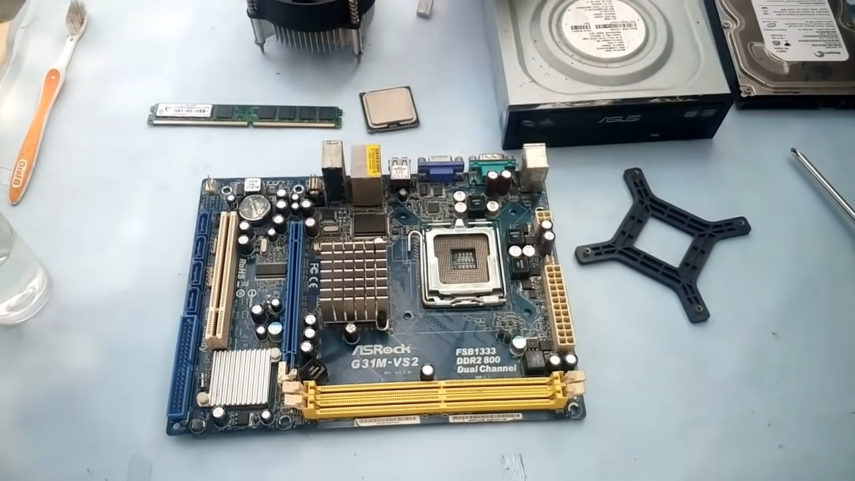
What should you know before buying a motherboard?
Buying a motherboard is often for those who want to build their own computers. This is the case when the models on the market are not practical and efficient enough to meet the demanding needs of a gamer. However, building your own PC is not easy. The most complicated is the choice of the motherboard. To choose one, you have to take into account a few criteria.
- First of all, it should be checked whether the motherboard is one of the new updated versions in the market. An up-to-date motherboard allows the computer to be upgraded if necessary since the processor will support it. Note that you should take the opportunity to buy a high-end quality processor like those from Intel for example.
- After that, you need a card that at least supports DDR3 RAM. This is a recent version in terms of RAM. Thanks to this, the computer will be able to operate smoothly. In addition, it guarantees a margin on upgrades.
- You also need to take the form factor into account . It will be he who will define the correspondence of the motherboard to the PC case. It will also be the one who will ensure the connection of all the elements of the computer to the motherboard.
- You should also choose a good chipset when purchasing the motherboard. This will be the primary administrator of the PC. As a result, the processes entering and leaving the motherboard will be handled by the latter.
- Another point to check: compatibility at the file level. You need to check, for example, if the motherboard is compatible with the videos you want to watch or download on the PC.
- Note that since it is a question here of assembling a PC from A to Z, it will be necessary to inquire about the manufacturer of the motherboard. Take a look at the customer reviews to see their feedback. This will give you the opportunity to know in advance the strengths and weaknesses of the motherboard you want to buy.
- Do not forget to check the warranty of the product you are considering ordering. If the manufacturer offers a warranty, that will give you a margin to test it out and see what it’s worth.
- And above all, be aware that the more upscale the motherboard, the more functional the PC will be. The quality of the motherboard will also guarantee the longevity of the computer.
Form factors
A form factor, when we talk about the computer world, is the set of technical and physical characteristics of an element. It is also called the congestion factor.
This generally concerns the daughter card, the power supply and the case, but especially the motherboard. For the latter, the form factor is characterized by the geometry of the board, the dimensions, the volume of the thermal zone, the ventilation, the chassis, the location of the mounting holes, electromagnetic interference, electrical characteristics and input/output connectors.
There are several form factors used for motherboards. There are for example the PC XT, the AT or Advanced Technology, the Baby AT, LPX / Mini LPX (Low Profile eXtended), NLX, WTX / SWTX, and many more. But the most used currently are ATX, Mini ATX, Micro ATX and E ATX.
- The ATX or Advanced Technology eXtended congestion factor was introduced around 1995. This form factor has 4 slots for RAM. This is an older model, but is still used by various vendors today. In addition to the slots for RAM, this form factor also has 7 PCI-E slots.
- The mini ATX meanwhile, has 2 slots for RAM, and a PCI-E slot. This form factor is smaller compared to the original ATX as it has a dimension that does not exceed 284.5 x 208.2mm in general.
- Micro ATX is a postman with 4 PCI-E slots. It is a version which is even smaller than the previous one.
- E ATX is the most efficient in terms of form factor and is also the most advanced and modern. It is intended for computers which use several hardware and elements at the same time, such as servers for example. This footprint has 6 slots for RAM.
To choose between these space factors, when building a PC, you must take into account the number of rams supported. For the ATX and the Mini ATX for example, they are able to support several RAMs at the same time, unlike the micro ATX. But the best is to take for example the ATX, since it is able to support several parameters, unlike the mini and micro. But after that, it will also depend on the performance and the use of the PC. If the computer to be mounted is a gaming PC, an ATX, mini or micro will not suffice. He will need an E ATX.
Bios and UEFI Bios
When we talk about Bios or UEFI Bios, we are talking about firmwares . They are used on all kinds of motherboards. They are different since they have their own attributes. The choice between the two will generally depend on your needs.
For UEFI Bios, this is firmware that acts as an intermediary between the firmware (for desktop PCs) and the main workstation. It starts up the operating system as well as other parts of the computer.
This system, compared to the classic Bios, is more efficient and more advanced. It actually keeps the PC memory in a file. This will be kept later in a part of the office. The affected part is the EFI system. Since the UEFI has specific compartmentalisation, it is, therefore, able to start the system while recording the Bios. Via a UEFI therefore, it is possible to obtain a very fast start.
The Bios meanwhile, is also firmware. It is different from UEFI given the location used. The Bios is located in a chip on the motherboard. It is installed by default, so the settings do not change even during an unexpected shutdown. Its system is simpler and easier to award. Its role is to ensure a start-up by checking if all the components are functional.
Given the difference between Bios and UEFI Bios, gamers are turning more to the most efficient and the fastest. In addition, the Bios has major drawbacks. For example, there is execution in 16-bit processor mode.
The Bios does not have sufficient space either. It only has 1MB and this is usually used to validate the process. As a result, the Bios is, therefore, longer and at the same time slows down the loading process of the PC. Other things that make people prefer UEFI Bios to traditional Bios are the features that Bios does not have access to.
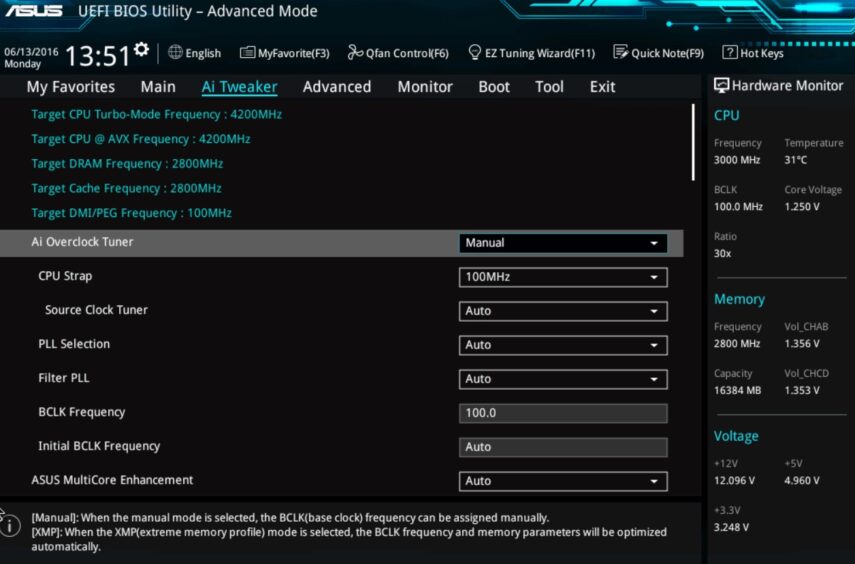
Intel or AMD processor?
A processor, also called a CPU, is a kind of central processing unit. It is, therefore, an important part of the office. It controls and performs the functions requested by your PC. In the processor market, there are two leaders, including Intel and AMD .
They are very well known and if you want to build your own PC then you have heard of them before. You must therefore ask yourself the following question: which processor to choose between the two? In order to help you find the one that will suit you the most, let’s see what differs them and see their peculiarities.
AMD is renowned for being a value-for-money processor manufacturing company. However, this reputation has changed in recent years. The latest processor considered to be high end, supplied by AMD, is the Ryzen 9.3959x. But very quickly, customers could see the defect of this product. It is not possible to overclock it.
Regarding Intel, it stands out in terms of features and qualities. It is possible to buy one of its processors with your eyes closed. One of the brand’s latest models is the 9900k. It is an 8-core, 16-thread processor. And unlike AMD’s models, it’s overclockable. Despite this, there is still a point that customers do not like about Intel processors. This is the memory or storage which is very limited.
For a gaming PC for example, since it takes a lot of space, fluidity and performance, customers prefer AMD. Customers who are just looking for quality prefer Intel. So you can choose the processor based on what you need and choosing a model from either Intel or AMD.
Some notions about CPU sockets
The socket is the element that connects the processor to the computer. It has a series of pins. On the processor there are holes. They connect to the pins of the socket. It is this manipulation that allows the processor to be fixed to the motherboard. The part with pins on the board is called the “processor socket”.
Most sockets are compatible with most processors. So some are not. You must therefore determine the type of processor socket before choosing one. Like processors, sockets come from brands like AMD and Intel. It will therefore be necessary to choose a specific brand.
The processor depends on the socket on the PC. So if you have an Intel socket, you need an Intel processor. If, however, you have an AMD socket, you must therefore purchase an AMD processor.
The generation of the socket and the CPU must also be taken into account.
For an 8th generation CPU, for example, an 8th generation socket is also required. For the moment, AMD has not produced new sockets and does not foresee new productions for 2020. Intel is continuing its research and working on the production of new sockets.
All about the motherboard chipset
On a motherboard, there are interrelated chips called chipsets. Their main functions are to control the data entering and leaving the card. These chips also have the role of connecting the processor to the PC . The chipset of a motherboard is therefore a vital element. Without this element, the PC will not be able to function.
Note however that a chipset must be compatible with the motherboard. If not, the link will cause a system failure. When purchasing, you will have access to two kinds of chipsets. There are overclocking chipsets and non-overclocking chipsets.
An overclocking chipset
Overclocking involves increasing the frequency of the PC clock. This speeds up the memory. This is a process that therefore speeds up the performance of a computer and in the meantime increases the memory and RAM. With this kind of process, it is possible to push the PC far beyond the limits imposed by the manufacturer. This process is called upon for various reasons. For example, you can use it as part of an expansion of the graphics card to be able to play certain games.
A non-overclocking chipset
Several chipsets do not have an overclocking process. These chipsets cannot, therefore, be overclocked. In the majority of cases, the chipsets concerned are old models, and therefore not very advanced. And if you force the overcloking, the PC may be damaged and various complicated problems to be solved. The best, therefore, is to choose a recent model: an overcloking chipset.
Motherboard and RAM compatibility
RAM, also called random access memory, is in a way the memory of the PC. It is possible to modify it, read it and others. It is used to store typical data as well as computer codes. It is also used to run programs on the PC . Besides these functions, RAM also has the role of boosting the speed and performance of the computer.
Considering the functionality of a RAM, it is therefore an important element for the PC. It is, therefore, necessary to know how to choose it. The choice must be based on questions of compatibility with the motherboard. Without this, it would be difficult to obtain a powerful machine. The newest and most advanced RAM is DDR3 / DDR4.
Why do I need a RAM compatible with the motherboard?
Although RAM appears to be just extra memory for the PC, it still plays a crucial role. If it is not compatible with the motherboard, it causes blockages in the performance of the PC.
RAM contributes to the speed of the processor. It gives easy access to data. The processor can therefore draw the data it needs via RAM, therefore, without going through the PC. As a result, the more space there is in RAM, the faster the PC will be. In the meantime, the motherboard will be able to provide the necessary functions to the computer.
The amount of RAM you need is determined by your motherboard. If the motherboard is for example intended for a gaming PC, it will therefore require more RAM on it. Note that it is possible to use RAM above the speed of the motherboard, but it is not possible to do the opposite. The system may overload in this case.
Let’s take an example. 2000 MHz DDR3 RAM can be used on a 1600 MHz DDR3 compatible motherboard. But 1600 MHz DDR3 RAM cannot be used on a 2000 MHz motherboard.
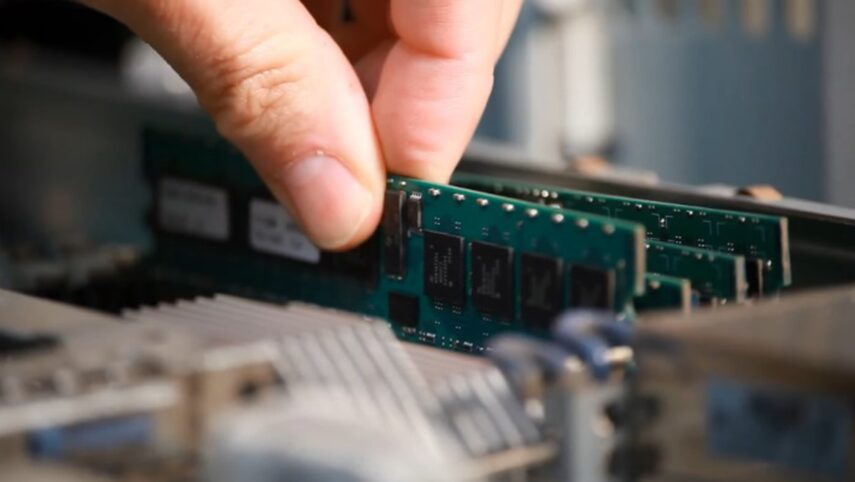
Why do you need more ports and slots on a motherboard?
Ports, also called slots, are the primary connectors that connect the motherboard and the computer’s external components. These ports are important for the operation of several features. With the ports, therefore, it is possible to connect several things to the motherboard.
For slots, on a motherboard, there are generally three different systems. There is a memory slot to connect the RAM to the mother. The more slots there are, the more RAM can be connected to the motherboard. As a result, the PC will have more memory. Then there are the high-speed slots as well. They are generally used to connect a graphics card, an expansion card, etc. Note that the slots are intended to connect the internal components of the PC to the motherboard. As for the ports, they are intended to connect the external components. There are USB ports, LED, audio port, switch port, etc.
The different ports and slots
The different ports and slots on a PC allow you to find out which components are compatible with the motherboard, whether they are external or internal components. Let’s take a look at the various types of ports and slots as well as their functionalities.
DIMM slots for memory:
These are DIMM or RAM slots. They are present to increase the performance and internal memory of the motherboard. The more RAM slots, therefore memory slots, the more computer memory will be. A computer can have a maximum of 8 memory slots at a time. The number of memory slots required by the computer will depend on the desired memory size.
SATA ports:
This is the port that connects the hard drive of the PC to the motherboard. A PC can have a maximum of 6 SATA ports. The disk to be inserted on the ports can reach one terabyte. If you need more storage, so if you need to install more hard disks, you have to choose a PC with several SATA ports. If you’re just using a single hard drive, then you won’t need more than two ports.
When it comes to picking a motherboard, the number of SATA ports isn’t always the most important thing. You also need to make sure that the port layout is good and that the ports are in locations that work well for your particular case and cable management needs. But in general, more SATA ports is better than fewer.
PCIe lanes:
These are lanes present in the PC. They are connected to ports and are used to detect connected and running items each time a PC is started. These PCIe lanes indicate the direction of electrical traffic. It is sort of the brain of the motherboard.
USB connectors:
They are present to connect a USB to the motherboard. These are parts with pins that are on the motherboard. There are usually four. There are USB 3.1, 3.0, 2.0 and 1.0 ports. These numbers indicate the speed of the ports regarding data transfer. A USB 1.0 port typically offers a speed of 480MB per second. A USB 2.0 port offers 5 GB. USB 3.0 and 3.1 ports offer speeds of up to 10 GB per second. The more efficient the port will be, the faster the data transmission will be.
Display Interface Ports:
These are digital ports. They are used to connect display components to the motherboard. They must be compatible with the monitor used. These ports will also determine the chosen graphics display (graphics card). The terms of compatibility must be observed when choosing the graphics card. It must match the digital display ports.
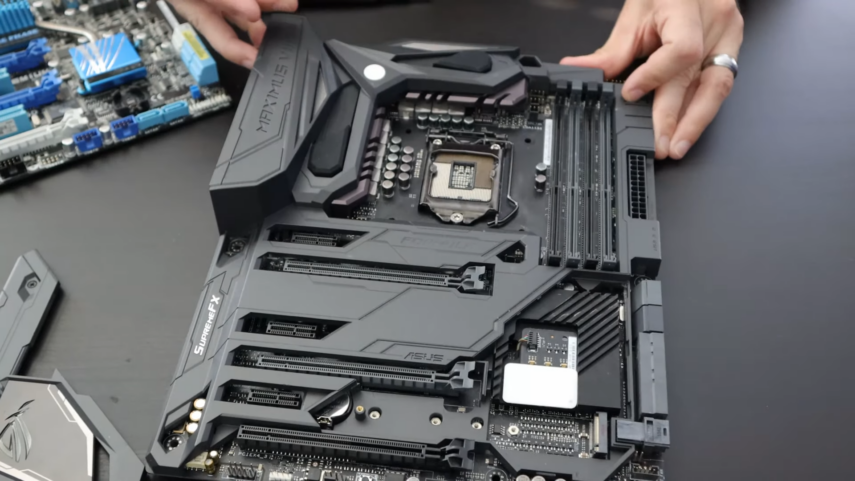
LAN and WIFI networking
LAN or local area network is an internet distribution system. This is done via hard-wired wires. Distribution can be done between several machines at the same time. This is a very old distribution system.
How to connect a LAN cable to a PC? This is done via the LAN port on the motherboard. The LAN port allows programs to run on the computer in the meantime. LAN is a default system and performs better than card models. The reason is simple. The default LAN is a component of the PC. Compatibility and synchronization are therefore more logical and understandable compared to an external LAN element.
Besides the wired connection, therefore, the Ethernet connection, it is also possible to benefit from the Internet on the PC. This is done via WiFi. After setting up various parts of the PC, you can start to integrate a home wireless network with the machine. Note that the chip for the WiFi connection is also integrated into the motherboard.
It is possible to combine LAN and WiFi on a PC for internet access. What you should know, however, is that the connection to use will depend on the work to be done on the computer. For a gamer, for example, the best is a LAN connection. It’s faster, more responsive and more efficient. For standard work, for example, office work, it is possible to opt for a WiFi connection since this avoids the wired system.
SLI and CrossfireX
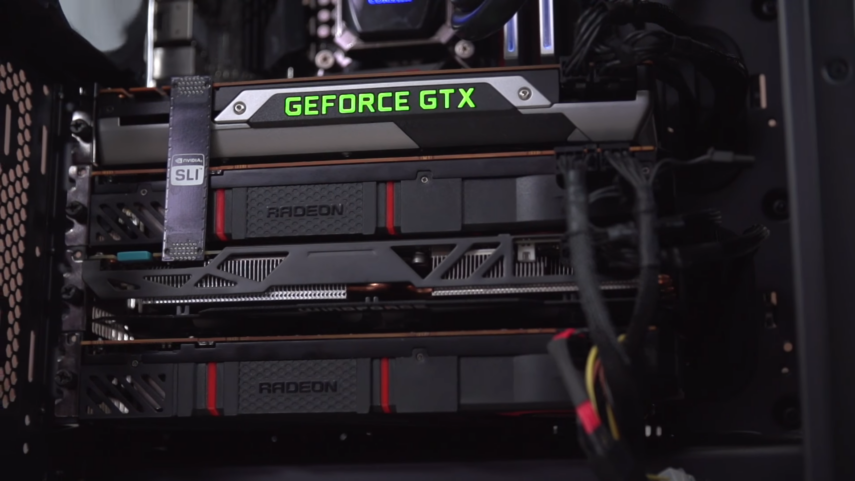
An SLI is a brand name for multi GPU technology. This technology was implemented by NVIDIA. It allows you to add two or more graphics cards to a PC. This then makes it possible to produce a single output. By connecting two graphics cards to a single PC, you can reap the benefits of each. Among the possible advantages, there is the increase in the processing power of graphics tasks for example.
There are several kinds of SLI cards. There are 2 or 3-way models for example. If you are thinking of using a 2-way SLI card, you need to make sure that it is compatible with the motherboard. For example, if you are using a quad-core i7 type 2-way SLI card, you should choose a motherboard powerful enough to support it. In addition, you must provide a cooling system.
Regarding the crossfireX, this is also a card that is not very different from the SLI. The big difference is the brand that made it. CrossfireX was designed by AMD. In terms of graphics cards, NVIDIA is very popular. However, to be able to use standard video cards, it is advisable to go through AMD’s CrossfireX.
Regarding the connection, it is done by connecting the cards to a cable or to a compatible point within the framework of an SLI card. However, if it is a CrossfireX card, you will need to use a PCIe 3.0 and make a direct connection to the motherboard.
Note that when purchasing, and SLI will be more expensive compared to a CrossfireX card. The reason is that for an SLI card, you need a compatible motherboard. CrossfireX is more accessible since it does not require any verification, therefore, no compatibility condition in general.
Integrated audio motherboard
Note that a PC needs a sound card. Its role is to reproduce the sound produced by a file (audio, video, etc.) via speakers or headphones for example. However, there are motherboards with an integrated sound card. The sound card attaches to a port that is usually found on the back of the computer. There may be several ports afterwards to insert the headphones or the cable that leads to the speakers. First of all, there are:
- A digital output. It is yellow or white in color. It is used for connection with loudspeakers.
- A sound input. It is blue in color and is intended for connection to a tape recorder for example.
- One microphone port. It is pink in color and is intended for headphones.
- A sound of green color. It is compatible with high-end helmets.
- Firewire is a port used for PCs with high-end sound cards.
- Midi or Joystick are yellow colored ports. As the name of the ports indicates, they are used for a joystick connection.
What other features do you need?
When buying a motherboard, you should also think about the additional features. The most important are the following:
- A power cable . This is a large, thick connector that will power the PC. When purchasing, you need a good quality power cable otherwise the PC will not be able to work properly.
- High-end cables include, for example, the 24-pin ATX. This is in addition to a standard power connector that can be connected to the end of the motherboard. If necessary, put a high budget for the power cable, because without it, the PC will be useless.
What are the best brands of motherboard?
When buying the motherboard, before choosing all the components, features and the like, it is necessary to choose a brand. We tend to neglect this step thinking that all brands are the same. This is however an important point to take into account since the brand will define the quality of the motherboard chosen.
Note that the best brand is the one that is most appreciated by gamers. Appreciated does not mean famous. The brand must be appreciated for the qualities it offers on its motherboards and not just because it is popular.
The reputation of a brand can therefore say a lot about the quality of the motherboard it offers. We’ve searched for brands that have a good reputation and have listed them below for you to choose from.
- ASUS
- MSI
- Gigabyte technology
These are brands that have been rated well by customers after using their motherboards. The rating was based on the quality of the motherboards offered. They are recognized by customers as the motherboards they offer are of high-end quality. In addition, the cards have several ports and slots. Otherwise, the cards were also made from good quality materials and are compatible with the majority of PCs. The only downside is the budget.
What budget for a motherboard?
The price of a motherboard is generally around 50 €. But for high-end models, the price can reach 300 € or 350 €. Let’s take an example. For the ASUS H110M-E / M2 motherboard, for example, the price is 350 €. Hereafter its characteristics:
- Chipset: it has a well-organized chipset
- Stability: its components are of good quality, moreover, the card is excellent in terms of regulation. Its PCB can have several layers. The construction is meanwhile robust.
- Expandability: This ASUS branded card offers good RAM support. In the meantime, it triples the number of PCIe slots.
- Overclocking: It can be overclocked.
FAQs
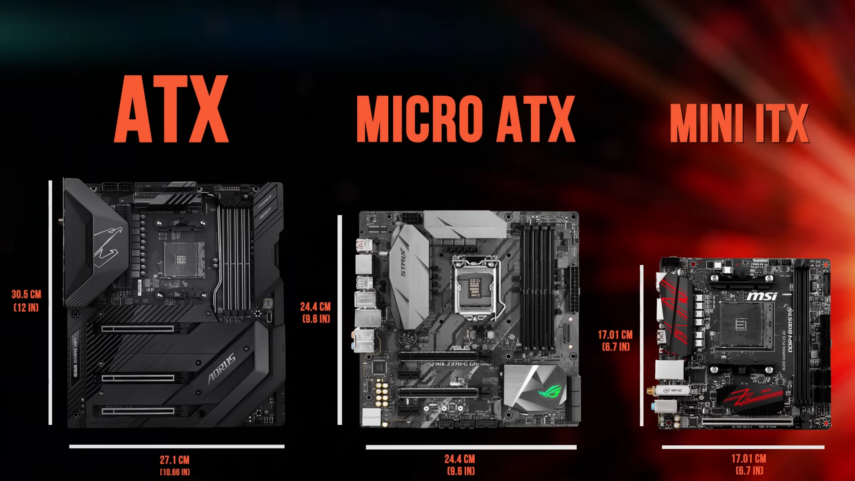
1. How many RAM slots do I need?
The number of RAM slots you need depends on the amount of RAM you want to have. If you only want 4GB of RAM, then you only need one RAM slot. However, if you want 8GB of RAM, then you will need two RAM slots. The same goes for if you want 16GB or 32GB of RAM. So, in short, the answer to how many RAM slots do you need is: as many as will fit the amount of RAM that you want.
2. What expansion slots do I need?
The most common type of expansion slot is the PCI slot. This is used for a variety of devices, including sound cards, network cards, and other peripherals. If you’re looking to add any of these types of devices to your computer, you’ll need a PCI slot.
Another common type of expansion slot is the PCIe slot. This is used for graphics cards, SSDs, and other high-speed devices. If you’re looking to upgrade your graphics card or add an SSD to your computer, you’ll need a PCIe slot.
Finally, there are also M.2 slots, which are used for ultra-fast SSDs. These are becoming increasingly popular in new computers, so if you’re looking to get the fastest possible storage speeds, you’ll need an M.2 slot.
3. What’s a PCB?
A Printed Circuit Board, or PCB, is the main component of a motherboard. It is a thin plate on which circuitry is etched or printed. The circuitry consists of pathways that connect different components on the board, such as the CPU, memory, and expansion slots.
The PCB itself is made up of several layers of material. The top layer is where the majority of the circuitry is printed. The bottom layer provides support and stability to the PCB. In between these two layers are other layers that help to route signals and protect the circuitry.
4. What are the dangers of overclocking your Motherboard?
When you overclocking your motherboard, you are essentially running your hardware outside of its intended specifications. This can lead to a number of problems, including:
- Your system may become unstable and crash frequently
- You may experience data loss or corruption
- Your system may overheat and damage your components
- You void your warranty by overclocking your motherboard
Conclusion
The features we have cited in this article are important. If you have noted the points that we have presented, then you have the opportunity to buy a great motherboard on your own. You must especially remain vigilant on certain characteristics like the ports and slots, the material of manufacture, the compatibility with the ancillary components, and the other possible functionalities.
Related Posts:
- What Is the Functioning Mechanism of A Ceiling Fan…
- How to Choose a Motherboard for Gaming? 2024 - What…
- Top 10 Best Motherboard For Ryzen 7 3800x 2024 -…
- 9 Best Motherboard For i9-10900K 2024 - Motherboard…
- How To Choose the Best Moving Company - 2024 Guide
- 14 Best Gaming Keyboards 2024 - How to Choose the…







